

Welcome to the Parish Family of
St. Margaret of Cortona
in Little Ferry

ANNOUNCEMENTS

Solemnity of the Immaculate Conception
Holy Day of Obligation
December 8
Masses are: 8 am / 12 Noon / 7 pm
We Are His Witnesses: A Pastoral Letter from Cardinal Tobin
As we welcome the New Year, Cardinal Tobin invites all Catholics in the Archdiocese of Newark to read We Are His Witnesses, his pastoral letter outlining new pathways for the future of the Archdiocese. Rooted in Pope Francis’ call for pastoral conversion, missionary discipleship, and synodality, the letter reflects on our shared journey of faith and calls us to embrace renewal, collaboration and missionary outreach. This multi-year initiative will guide us in shaping a vibrant, hopeful future for our Church community.
Click to read We Are His Witnesses and join this journey of faith as we respond to Christ’s call to be His witnesses in the world.
Official Hymn for the 2025 Jubilee Year
Lyrics by Msgr. Pierangelo Sequeri
Music by Maestro Francesco Meneghello
Recording performed by the Choir of the Basilica of the National Shrine of the Immaculate Conception, Washington, DC - Peter Latona, Director
Catholic Charities
Catholic Charities USA supports a national network of agencies committed to encountering those along the margins, regardless of their faith.
Want to help victims of recent hurricanes? Click on this link: https://www.catholiccharitiesusa.org/
Welcome New Parishioners
Register with us by filling up this form and dropping it in the collection basket or at the Parish Office. Click on the form below to download.

Music is an extremely important part of liturgy at the Parish of St. Margaret of Cortona and we are looking for enthusiastic music lovers and musicians to join our music ministry.
ALL ARE WELCOME!
St. Margaret of Cortona’s choir sings at the 11:30 Mass every Sunday and at other liturgies throughout the year. Rehearsals are held every Thursday at 7:30 pm beginning in September and through the month of June. No experience is necessary. Let us make a joyful noise to the Lord! Call Eileen - 201-843-1097 or see her after Mass!
2025 Archdiocese of Newark Annual Appeal

Jersey Catholic
Jersey Catholic is the news site of the Archdiocese of Newark and brings you top news from around the Archdiocese, our Catholic schools throughout the U.S., and the Vatican.
Visit https://jerseycatholic.org/ for the latest local and global Church news.
Saint of the Day Podcast ~ A brief story about a Saint each day.
Donate to St. Margaret's
Here are some ways that you can help our Parish during these trying times:
ParishSoft - Click here to go to the giving site.
You can also give via text to (201) 689-5641, just enter the amount you want to donate in the message. You will need to create an account if you haven't done so yet. Click here if you need help creating an account.
Step-By-Step Walk Through the Mass
Click on this link to go the website: https://www.eucharisticrevival.org/blog-categories/series-on-the-mass
SCHEDULES
Mass Schedule
Saturday ~ 5:30 pm
Sunday ~ 9:00 am and 11:30 am
Weekdays:
Monday through Friday:
12:00 PM
First Saturday Mass
12:05 PM in the Church
Holy Days
(Except Christmas and Easter): 8:00 AM, 12:05 PM, 7:00 PM
Sacrament of Reconciliation (Confession)
Saturdays 1:00 - 2:00 PM
Experience God’s Mercy. Celebrate the Grace-Filled Sacrament of Reconciliation

Contact Us
Parish Center (Monday through Thursday 10 am till 4pm. Closed on Fridays)
Tel: 201-641-2988
Fax: 201-322-0172
Rectory (By appointment only):
201-641-2988
Religious Education (Sunday to Thursday):
201-641-3937




New in the Area?
If you are new in the area, why not join our ever-growing Parish family. Stop by the Parish Center any weekday and register. Click on this link to download the form or call us at 201-641-2988
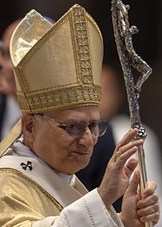
Pope Leo's Prayer Intention for December
For Christians in areas of conflict
Let us pray that Christians living in areas of war or conflict, especially in the Middle East, might be seeds of peace, reconciliation, and hope.
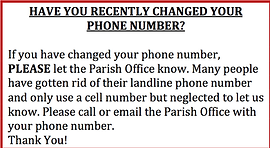
POSTER BOARD

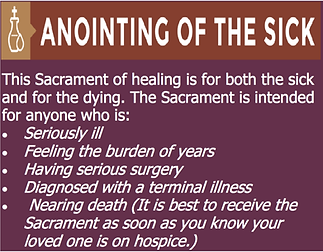












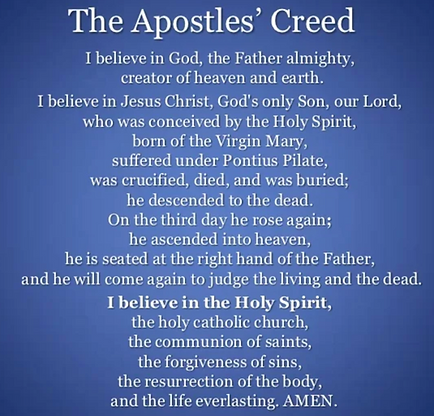
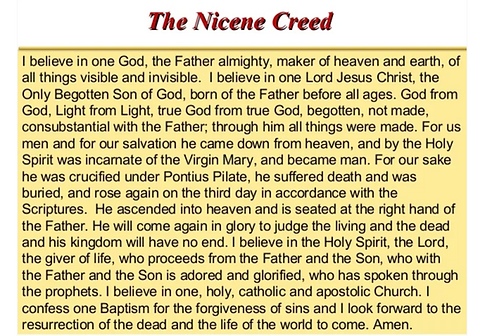

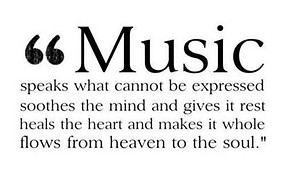



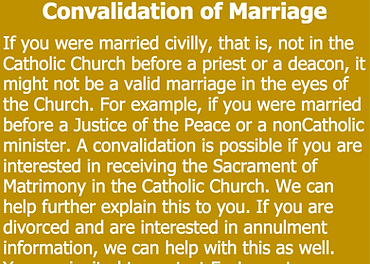


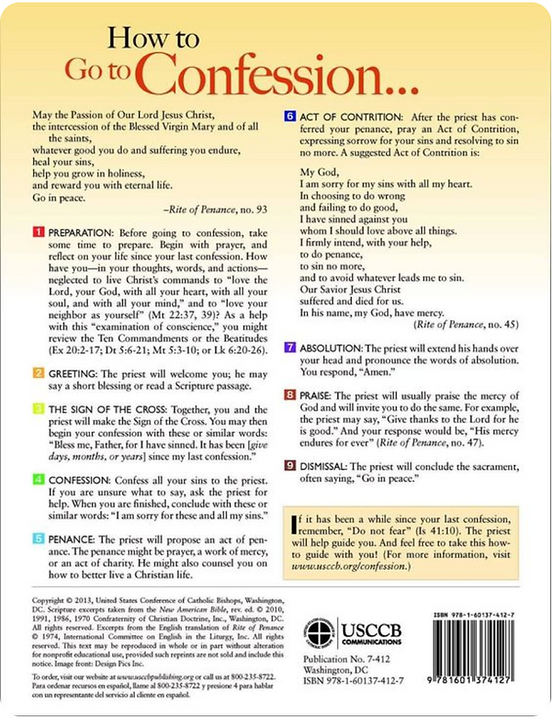














DECEMBER THE MONTH DEDICATED TO THE IMMACULATE CONCEPTION
The month of December is traditionally dedicated to the Immaculate Conception. The Blessed Virgin Mary, according to the teaching of the Catholic Church, in the first moment of her conception, by a singular privilege of Almighty God, and by virtue of the foreseen merits of Jesus Christ, our Saviour and hers, was preserved from all stain of original sin.
The Catholic Church teaches that Mary was conceived by normal biological means in the womb of her mother, Saint Anne, but God acted upon her soul, keeping it "immaculate". This age-old belief of the Church was defined by Pope Pius IX in 1854 as an article of revealed truth.
Although the belief that Mary was sinless, or conceived with an immaculate soul, has been widely held since Late Antiquity, the doctrine was not dogmatically defined until 1854, by Pope Pius IX in his papal bull Ineffabilis Deus. The Catholic Church celebrates the Feast of the Immaculate Conception on December 8; in many Catholic countries, it is a holy day of obligation or patronal feast.
When discussing the Immaculate Conception, an implicit reference may be found in the angelic greeting to Mary. The Archangel Gabriel said, "Hail, full of grace, the Lord is with thee." (Luke 1:28). The phrase "full of grace" is a translation of the Greek word kecharitomene. It therefore expresses a characteristic quality of Mary.
The traditional translation, "full of grace," is better than the one found in many recent versions of the New Testament, which give something along the lines of "highly favored daughter." Mary was indeed a highly favored daughter of God, but the Greek implies more than that (and it never mentions the word for "daughter"). The grace given to Mary is at once permanent and of a unique kind. Kecharitomene is a perfect passive participle of charitoo, meaning "to fill or endow with grace." Since this term is in the perfect tense, it indicates that Mary was graced in the past but with continuing effects in the present. So, the grace Mary enjoyed was not a result of the angel’s visit. In fact, Catholics hold, it extended over the whole of her life, from conception onward. She was in a state of sanctifying grace from the first moment of her existence.
The Feast of Immaculate Conception
By 750, the feast of her conception was widely celebrated in the Byzantine East, under the name of the Conception (active) of Saint Anne. In the West it was known as the feast of the Conception (passive) of Mary, and was associated particularly with the Normans, whether these introduced it directly from the East or took it from English usage.
The spread of the feast, by now with the adjective "Immaculate" attached to its title, met opposition on the part of some, on the grounds that sanctification was possible only after conception. Critics included Saints Bernard of Clairvaux, Albertus Magnus and Thomas Aquinas. Other theologians defended the expression "Immaculate Conception", pointing out that sanctification could be conferred at the first moment of conception in view of the foreseen merits of Christ, a view held especially by Franciscans.
William of Ware and Blessed John Duns Scotus pointed out that Mary’s Immaculate Conception enhances Jesus’ redemptive work. One of the chief proponents of the doctrine was the Hungarian Franciscan Pelbartus Ladislaus of Temesvár.
On 28 February 1476, Pope Sixtus IV, authorized those dioceses that wished to introduce the feast to do so, and introduced it to his own diocese of Rome in 1477, with a specially composed Mass and Office of the feast. With his bull Cum praeexcelsa of 28 February 1477, in which he referred to the feast as that of the Conception of Mary, without using the word "Immaculate", he granted indulgences to those who would participate in the specially composed Mass or Office on the feast itself or during its octave, and he used the word "immaculate" of Mary, but applied instead the adjective "miraculous" to her conception. On 4 September 1483, referring to the feast as that of "the Conception of Immaculate Mary ever Virgin", he condemned both those who called it mortally sinful and heretical to hold that the "glorious and immaculate mother of God was conceived without the stain of original sin" and those who called it mortally sinful and heretical to hold that "the glorious Virgin Mary was conceived with original sin", since, he said, "up to this time there has been no decision made by the
Roman Church and the Apostolic See." This decree was reaffirmed by the Council of Trent.
Pope Pius V, while including the feast in the Tridentine Calendar, removed the adjective "Immaculate" and suppressed the existing special Mass for the feast, directing that the Mass for the Nativity of Mary (with the word "Nativity" replaced by "Conception") be used instead. Part of that earlier Mass was revived in the Mass that Pope Pius IX ordered to be used on the feast and that is still in use.
On 6 December 1708, Pope Clement XI made the feast of the Conception of Mary, at that time still with the Nativity of Mary formula for the Mass, a Holy Day of Obligation. Until Pope Pius X reduced in 1911 the number of Holy Days of Obligation to 8, there were in the course of the year 36 such days, apart from Sundays.[36] Writers such as Sarah Jane Boss interpret the existence of the feast as a strong indication of the Church's traditional belief in the Immaculate Conception.
Novena of Immaculate Conception
This novena starts on November 29, which begins 9 days before the Feast of the Immaculate Conception.
O most pure Virgin Mary conceived without sin, from the very first instant, you were entirely immaculate. O glorious Mary full of grace, you are the mother of my God – the Queen of Angels and of men. I humbly venerate you as the chosen mother of my Savior, Jesus Christ.
The Prince of Peace and the Lord of Lords chose you for the singular grace and honor of being His beloved mother. By the power of His Cross, He preserved you from all sin. Therefore, by His power and love, I have hope and bold confidence in your prayers for my holiness and salvation.
I pray that your prayers will bring me to imitate your holiness and submission to Jesus and the Divine Will.
Hail Mary, full of Grace, the Lord is with you. Blessed are you among women and blessed is the fruit of your
womb, Jesus. Holy Mary, Mother of God, pray for us sinners now and at the hour of our death.
Now, Queen of Heaven, I beg you to beg my Savior to grant me these requests
(Mention your intentions)
My holy Mother, I know that you were obedient to the will of God. In making this petition, I know that God’s
will is more perfect than mine. So, grant that I may receive God’s grace with humility like you.
As my final request, I ask that you pray for me to increase in faith in our risen Lord; I ask that you pray for me
to increase in hope in our risen Lord; I ask that you pray for me to increase in love for the risen Jesus!
Hail Mary, full of Grace, the Lord is with you. Blessed are you among women and blessed is the fruit of your
womb, Jesus. Holy Mary, Mother of God, pray for us sinners now and at the hour of our death. Amen.

What do a lion, ox, eagle, and angel have in common?
They’re all symbols of the Gospel writers!
When you see the four Evangelists—Matthew, Mark, Luke, and John—depicted in art, one quick way to know who is who is to look at their symbols, which are frequently depicted with them.
You’ll see a man (usually portrayed as an angel), a lion, an ox, or an eagle. Sometimes artists utilize the symbols as stand-ins for the actual saints, so you’d need to know your symbology to figure out who is represented.
Let’s start by matching the right symbol with the right Evangelist:
Matthew: Man/Angel
Mark: Lion
Luke: Ox
John: Eagle
The great Church Father St. Jerome, who lived in the 4th and 5th centuries, gave us the pairings as we now know them. St. Gregory the Great corroborated his interpretation.
The symbols themselves come from the book of Ezekiel, who had a vision of God in the midst of these four creatures. The Church Fathers interpreted this as a foreshadowing of the four Gospels.
We meet the four creatures again in the 4th chapter of St. John’s Apocalypse:
“…the first living creature like a lion, the second living creature like an ox, the third living creature with the
face of a man, and the fourth living creature like a flying eagle…”
Matthew’s symbol is a man because he begins his Gospel with Christ’s human genealogy, focusing on Christ the Man.
Mark is represented by a lion because his Gospel starts off with a roar. Right away in the first chapter, we are confronted with the fiery words of St. John the Baptist, the “voice of one crying in the wilderness.”
Luke is accompanied by an ox, an animal of sacrifice. This is because the first event he recounts is the apparition of the Angel Gabriel to Zechariah, the father of St. John the Baptist. Zechariah, a priest, is offering sacrifice to God in the temple when St. Gabriel appears to announce the impending birth of St. John.
An eagle is the companion of St. John, because in his Gospel, St. John “soars” above earthly events to contemplate the Divinity of Christ. His narrative begins with these sublime words: “In the beginning was the Word, and the Word was with God, and the Word was God.”
The Church and her saint have always had a deep friendship with God’s creatures!


